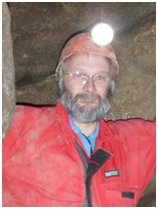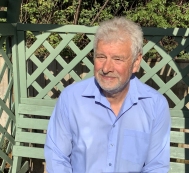READING LISTS
Publications
This is a compilation from different reading lists: inevitably there will be some overlaps, but they are all included here in one place for convenience.
Publications by John Barnatt, archaeological adviser to EMET:
- Barnatt, J. Delving Ever Deeper: The Ecton Mines through Time ISBN 978-0-901428-26-4, Bakewell, Peak District National Park. CLICK HERE for further information.
- Barnatt, J. 2002 The Development of Deep Ecton Mine, Staffordshire, 1723-1760: Mining History 15.1, 10-23.
- Barnatt, J. and Manley, R. 2006: In the Footsteps of our Ancestors: Heritage Walks. Bakewell: Peak District National Park Authority.
- Barnatt, J. and Mortimer, P. 2004: Ecton Hill and Mine: Mine Entrance Condition Survey – 26 March 2004. Confidential unpublished report for the Cox Family.
- Barnatt, J. and Penny, R. 2004: The Lead Legacy: The Prospects for the Peak District’s Lead Mining Heritage. Bakewell: Peak District National Park Authority.
- Barnatt, J., Rieuwerts, J. and Thomas, G. H. 1997: The early use of gunpowder in the Peak District: recent exploration and re-evaluation of the workings at Stone Quarry Mine and Dutchman Level, Ecton. Mining History 13.4, 24-43.
- Barnatt, J. and Thomas, G. H. 1998: Prehistoric mining at Ecton, Staffordshire: A dated antler tool and its context. Mining History 13.5, 72-78.
- Barnatt, J. (2015a) Underground Electric Lighting in the 1880s: Clayton Mine, Ecton Staffordshire. Industrial Archaeological Review 37.1, pp 20-32.
- Barnatt, J. (2016) The 1788 Boulton and Watt Engine House at Ecton: Archaeological Excavations 2012-14. Mining History 19.5, pp. 38-76.
- Barnatt, J. (2021) Dale Mine Warslow: Survey and Interpretation of a Historically Important Lead Mine. Mining History 21.3, pp. 1-46.
- Barnatt, J. (2021) Dale Mine: Archaeological Excavations and Consolidation at and around the Settling Tanks. Mining History 21.3, pp. 47-85.
Books
- John A Robey and Lindsey Porter, 1972: The Copper and Lead Mines of Ecton Hill, Staffordshire Moorland Publishing Company
- John A Robey and Lindsey Porter, 2000: The Copper and Lead Mines around the Manifold Valley Landmark Publishing Ltd
- Lindsey Porter, 2004: Ecton Copper Mines under the Dukes of Devonshire 1760 – 1790 Landmark Publishing Ltd
- James Roberts, 1900: Wetton, Thor’s Cave, and Ecton Mines Osborne of Ashbourne. See a review and index by Hugh Carson at http://www.any-town.co.uk/W/Wetton/Texts/Wetton_Index.htm
Articles
- Simon Timberlake, 2014: Prehistoric Copper Extraction in Britain: Ecton Hill, Staffordshire Proceedings of the Prehistoric Society, Volume 80, pp 159-206
- Lindsey Porter, 1970: Ecton HIll, – Part 11 Underground PDHMS Vol 4 No 3 pp195 – 216
- John Barnatt and G Thomas, 1998: prehistoric mining at Wetton, Staffordshire: A dated antler too and its context Mining History Volume 13, No 5, pp72-78
- J A Robey, 1969: The Ecton Copper Mines in the Seventeenth Century PDHMS Vol 4 No 2 pp 145 – 155
- J A Robey, 1971: The Burgoyne Mines at Ecton in the Seventeenth Century PDMHS Vol 6 No 2 pp 71-72
- Barnatt, J. and Bramley, J., 2008. Copper bottomed Geoscientist 18.1 January 2008
Research Reports
The full UNEXMIN report D7.6 (2019) on geoscientific and archaeological interpretation. It includes detailed Annexes by John Barnatt and Richard Shaw.
The UNEXUP report D2–3 (2022) with updates to the UNEXMIN data
EHFSA Reading List
- Barnatt, J. 2002: The Development of Deep Ecton Mine, Staffordshire, 1723-1760. Mining History 15.1, 10-23.
- Barnatt, J. and Manley, R. 2006: In the Footsteps of our Ancestors: Heritage Walks. Bakewell: Peak District National Park Authority.
- Barnatt, J. and Mortimer, P. 2004: Ecton Hill and Mine: Mine Entrance Condition Survey – 26 March 2004. Confidential unpublished report for the Cox Family.
- Barnatt, J. and Penny, R. 2004: The Lead Legacy: The Prospects for the Peak District’s Lead Mining Heritage. Bakewell: Peak District National Park Authority.
- Barnatt, J., Rieuwerts, J. and Thomas, G. H. 1997: The early use of gunpowder in the Peak District: recent exploration and re-evaluation of the workings at Stone Quarry Mine and Dutchman Level, Ecton. Mining History 13.4, 24-43.
- Barnatt, J. and Thomas, G. H. 1998: Prehistoric mining at Ecton, Staffordshire: A dated antler tool and its context. Mining History 13.5, 72-78.
- Bray, E. and Horsley, T. 1998: Ecton Hill, Derbyshire: Report on Geophysical Survey, June 1998. Ancient Monuments Laboratory report number: 53/98.
- Bromfield, P. 1998: ‘Industrial workers in a peasant community. 2 Vols Manifold Valley Par-ishes in the eighteenth century, with special reference to workers at Ecton Copper Mine, c. 1760-1820’. Keele PhD
- Bromfield, P. 1999: ‘Traveller’s tale and contemporary source : William Efford’s visit to Ecton Copper mine in the 1760s’. Staffordshire Studies 11 (1999), pp. 69-81.
- Doonan, R. C. P. 1998: Geochemical prospection for early copper production sites at Ecton Hill, Derbyshire. Unpublished report.
- Ford, T.D. 1976: The ores of the South Pennines and Mendip Hills – a comparative study, pp 161-195 in K.H. Wolf (ed). Handbook of Strata-bound and stratiform ore deposits. Vol. 5. Elsevier, Amsterdam.
- Ford, T.D. 1999: The growth of geological knowledge in the Peak District. Mercian Geolo-gist, Vol.14, no.4, pp 161-190.
- Ford, T.D. 2000: Geology of the Ecton and other North East Staffordshire mines. Mining History, Vol. 14, no. 4, pp 1-22.
- Ford, T. D. and Quirk, D. G, 1995: Mineralization of the South Pennines, Geology Today, September – October 1995/177, Blackwell Science Ltd.
- Ford, T.D., Sarjeant, W.A.S. & Smith, M.E. (1993 reprint): The Minerals of the Peak District of Derbyshire. UK Journal of Mines & Minerals No. 13: Bull. P.D.M.H.S. Vol. 12,
- Guilbert, G. 1994a: Hammer stones from the Ecton copper mine. Bulletin of the Peak Dis-trict Mines Historical Society 12.3, 26-7.
- Guilbert, G. 1994b: More on the Ecton hammer stones. Bulletin of the Peak District Mines Historical Society 12.4, 14.
- Kirkham, N. and Ford, T. D. 1967: The Ecton Copper Mines: Staffordshire. Peak District Mines Historical Society, Special Publication No 1 (2nd Edition).
- Masheder, R. and Rankin, A.H. 1988: Fluid inclusion studies on the Ecton Hill copper de-posits, North Staffordshire, Mineralogical Magazine, Vol. 52, pp 473-482.
- Pickin, J. 1999: Stone hammers from the Ecton Mines in the Bateman Collection, Sheffield. Mining History 14.2, 15-18.
- Porter, L. 2004: Ecton Copper Mines under the Dukes of Devonshire: 1760-1790. Ashbourne: Landmark.
- Porter, L. and Robey, J. 2000: The Copper and Lead Mines around the Manifold Valley, North Staffordshire. Ashbourne: Landmark.
- Quirk, D.G. 1993: The minerals of the Peak District. Bulletin of the Peak District Mining and Historical Society, Vol 12, no.1.
- Robey, J. A. and Porter, L. 1972: The Copper and Lead Mines of Ecton Hill, Staffordshire. Ashbourne: Moorland.
- Timberlake, S. 2003b: Early metal mining research in the UK: the developments of the last 10 years. In Craddock, P. T. and Lang, J. (eds.) Mining and Metal Production through the Ages. London: British Museum Press, 21-42.
- Webb, D. 2006: The Hollow Hill: The Story of the Ecton Mines. A private archive film com-missioned by the Ecton Hill Field Studies Association. Running time: 50 minutes. Format: DVD Region 2 Pal System.

Links to other online resources
Please send me any suggestions for inclusion here!
DOWNLOADS
Powerpoint files
Making the most of abandoned mines (IOM3 mining technology conference 2021)
Robot submersibles in Ecton Mine (Cornish Institute of Engineers, April 2020)
UNEXUP: Ecton Mine geological structure
MDSG 2020: Exploration of flooded parts of Ecton Mine
UNEXMIN and UNEXUP projects at Ecton: Eden Project conference 2021
IMWA conference July 2021: Development of submersible robots for survey of underground flooded mines
Videos
Churnet View school visit, 2013
UNEXMIN project: Ecton in 6 minutes
Apes Tor: Oxford Geology Group 2012
Ecton pumping shaft: 65m below water level
Ecton winding shaft: 97m below water level
Ecton Mine laser scan fly-through
The Hollow Hill: the story of the Ecton Mines – by David Webb
Archaeological Discoveries at Deep Ecton Mine: UNEXMIN conference May 2019
The Robot and the Abyss (about Hranice Propast but includes Ecton footage)



 The powder house, where dangerous explosives were stored. This small shed was placed well away from other buildings and was erected in 1884. The interior was originally lined with wooden panels as an added precaution against accidentally creating sparks.
The powder house, where dangerous explosives were stored. This small shed was placed well away from other buildings and was erected in 1884. The interior was originally lined with wooden panels as an added precaution against accidentally creating sparks.

 was lowered on one side and it was converted to a field barn. The steam engine was located in the far half of the building, while its boiler was in the near half. A short distance upslope there was a small reservoir pond for the boilers fed by water brought up from the mine.
was lowered on one side and it was converted to a field barn. The steam engine was located in the far half of the building, while its boiler was in the near half. A short distance upslope there was a small reservoir pond for the boilers fed by water brought up from the mine.


 In the 1760s-80s the internationally important Deep Ecton Copper Mine made a fortune for the Dukes of Devonshire. The first copper was mined here long before, in the Bronze Age over 3,500 years ago. The Dukes, who owned northern and western parts of the hill, had their mines worked in-house for over 50 years from 1760. From the 1820s private mining companies embarked on a fruitless search for further rich ore deposits. The mines were finally abandoned in 1889. While the 19th century ventures lost investors’ money, with them at best only finding other peoples’ leavings, they kept local miners in work for decades.
In the 1760s-80s the internationally important Deep Ecton Copper Mine made a fortune for the Dukes of Devonshire. The first copper was mined here long before, in the Bronze Age over 3,500 years ago. The Dukes, who owned northern and western parts of the hill, had their mines worked in-house for over 50 years from 1760. From the 1820s private mining companies embarked on a fruitless search for further rich ore deposits. The mines were finally abandoned in 1889. While the 19th century ventures lost investors’ money, with them at best only finding other peoples’ leavings, they kept local miners in work for decades.


 Peter has nearly 50 years experience mostly at the sharp end of the minerals industry. He is a metallurgist who started in the steel industry prior to his degree at Cambridge University. He held senior positions with Anglo American on the Zambian Copperbelt, and at Glebe Mines fluorspar operation in the Derbyshire Peak District; and has been an independent freelance since 2000. He has had connections with Ecton Mine and Geoff Cox since the mid-1980s. He is Secretary of The British Aggregates Association, a member of the CBI Minerals Group and the UK National Minerals Forum; and has various business interests in the industrial minerals industry in the UK, Europe and globally; and is also a Director of MAUK (Mining Association of the UK) and Amemptos Music.
Peter has nearly 50 years experience mostly at the sharp end of the minerals industry. He is a metallurgist who started in the steel industry prior to his degree at Cambridge University. He held senior positions with Anglo American on the Zambian Copperbelt, and at Glebe Mines fluorspar operation in the Derbyshire Peak District; and has been an independent freelance since 2000. He has had connections with Ecton Mine and Geoff Cox since the mid-1980s. He is Secretary of The British Aggregates Association, a member of the CBI Minerals Group and the UK National Minerals Forum; and has various business interests in the industrial minerals industry in the UK, Europe and globally; and is also a Director of MAUK (Mining Association of the UK) and Amemptos Music. I am an exploration and mining geologist (C. Geol) with over 25 years of experience in the deep geological disposal of radioactive waste and 7 years of experience of exploration, environmental impact assessment and mining feasibility for the Kayelekera uranium deposit in Northern Malawi, Africa. I retired from the British Geological Survey in 2016 and am currently a member of the Government’s Committee on Radioactive Waste Disposal. I undertook a PhD on caves and mines in the Peak District and, as an active caver and mine explorer, have been studying the underground world of the Peak District since the mid 1970’s, including the mines of the Ecton Area. I am a director (editor) of the Peak District Mines Historical Society and the mine manager of their Temple Mine in Matlock Bath.
I am an exploration and mining geologist (C. Geol) with over 25 years of experience in the deep geological disposal of radioactive waste and 7 years of experience of exploration, environmental impact assessment and mining feasibility for the Kayelekera uranium deposit in Northern Malawi, Africa. I retired from the British Geological Survey in 2016 and am currently a member of the Government’s Committee on Radioactive Waste Disposal. I undertook a PhD on caves and mines in the Peak District and, as an active caver and mine explorer, have been studying the underground world of the Peak District since the mid 1970’s, including the mines of the Ecton Area. I am a director (editor) of the Peak District Mines Historical Society and the mine manager of their Temple Mine in Matlock Bath. mongst geologists and others involved in the application of geoscience, particularly through the promotion of professional titles such as CEng, CGeol, and EurGeol. She has served on the Council of the Geological Society of London and is a past President of the European Federation of Geologists. For many years, she has been a member of the Pan European Reserves and Resources Reporting Committee (PERC).
mongst geologists and others involved in the application of geoscience, particularly through the promotion of professional titles such as CEng, CGeol, and EurGeol. She has served on the Council of the Geological Society of London and is a past President of the European Federation of Geologists. For many years, she has been a member of the Pan European Reserves and Resources Reporting Committee (PERC). Phil in Organic Chemistry, Nottingham Uni 1977-79, awarded 1981
Phil in Organic Chemistry, Nottingham Uni 1977-79, awarded 1981 I am a geoscientist with more than 45 years of experience. After working as a mine geologist in the Yorkshire Coalfield for 12 years, I moved on to seismic exploration for coal, potash and other minerals focussing on seismic interpretation and delineating geological structure to aid mine planning. My prospect experience includes projects in UK, Spain, Turkey, Australia, Africa, Argentina and Canada.
I am a geoscientist with more than 45 years of experience. After working as a mine geologist in the Yorkshire Coalfield for 12 years, I moved on to seismic exploration for coal, potash and other minerals focussing on seismic interpretation and delineating geological structure to aid mine planning. My prospect experience includes projects in UK, Spain, Turkey, Australia, Africa, Argentina and Canada. ng and engineering around the world. Although I am now retired I continue to hold Board appointments with national and international regulatory and standards organisations which I find professionally stimulating and thoroughly rewarding.
ng and engineering around the world. Although I am now retired I continue to hold Board appointments with national and international regulatory and standards organisations which I find professionally stimulating and thoroughly rewarding.